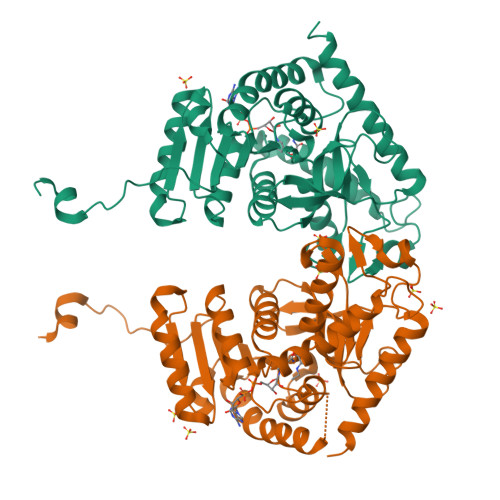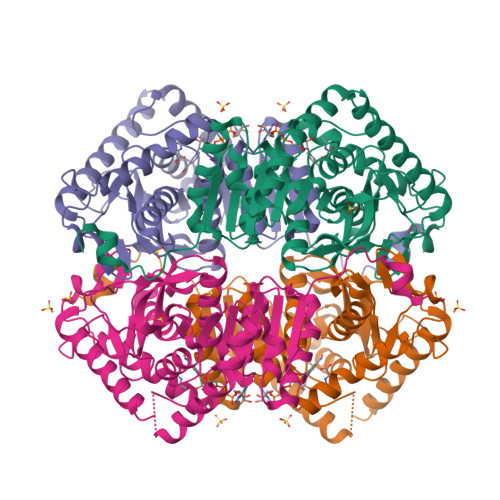Identification of human LDHC4 as a potential target for anticancer drug discovery.
Tan, H., Wang, H., Ma, J., Deng, H., He, Q., Chen, Q., Zhang, Q.(2022) Acta Pharm Sin B 12: 2348-2357
- PubMed: 35646544
- DOI: https://doi.org/10.1016/j.apsb.2021.12.002
- Primary Citation of Related Structures:
7EPM - PubMed Abstract:
One of the distinct hallmarks of cancer cells is aerobic glycolysis (Warburg effect). Lactate dehydrogenase A (LDHA) is thought to play a key role in aerobic glycolysis and has been extensively studied, while lactate dehydrogenase C (LDHC), an isoform of LDHA, has received much less attention. Here we showed that human LDHC was significantly expressed in lung cancer tissues, overexpression of Ldhc in mice could promote tumor growth, and knock-down of LDHC could inhibit the proliferation of lung cancer A549 cells. We solved the first crystal structure of human LDHC4 and found that the active-site loop of LDHC4 adopted a distinct conformation compared to LDHA4 and lactate dehydrogenase B4 (LDHB4). Moreover, we found that (ethylamino) (oxo)acetic acid shows about 10 times selective inhibition against LDHC4 over LDHA4 and LDHB4. Our studies suggest that LDHC4 is a potential target for anticancer drug discovery and (ethylamino) (oxo)acetic acid provides a good start to develop lead compounds for selective drugs targeting LDHC4.
Organizational Affiliation:
The Research Institute of Qinghai-Tibet Plateau, Southwest Minzu University, Chengdu 610041, China.



















